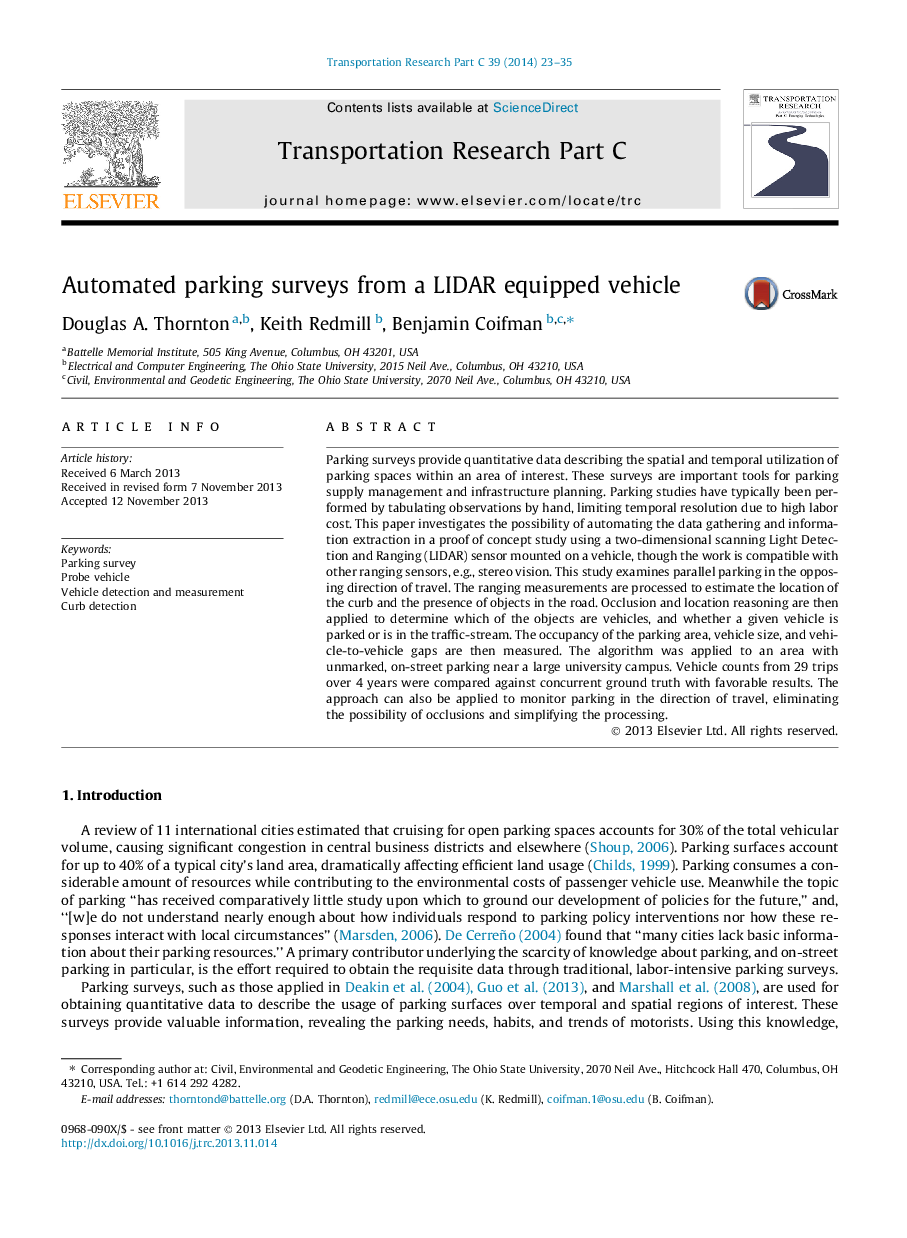| Article ID | Journal | Published Year | Pages | File Type |
|---|---|---|---|---|
| 524900 | Transportation Research Part C: Emerging Technologies | 2014 | 13 Pages |
Parking surveys provide quantitative data describing the spatial and temporal utilization of parking spaces within an area of interest. These surveys are important tools for parking supply management and infrastructure planning. Parking studies have typically been performed by tabulating observations by hand, limiting temporal resolution due to high labor cost. This paper investigates the possibility of automating the data gathering and information extraction in a proof of concept study using a two-dimensional scanning Light Detection and Ranging (LIDAR) sensor mounted on a vehicle, though the work is compatible with other ranging sensors, e.g., stereo vision. This study examines parallel parking in the opposing direction of travel. The ranging measurements are processed to estimate the location of the curb and the presence of objects in the road. Occlusion and location reasoning are then applied to determine which of the objects are vehicles, and whether a given vehicle is parked or is in the traffic-stream. The occupancy of the parking area, vehicle size, and vehicle-to-vehicle gaps are then measured. The algorithm was applied to an area with unmarked, on-street parking near a large university campus. Vehicle counts from 29 trips over 4 years were compared against concurrent ground truth with favorable results. The approach can also be applied to monitor parking in the direction of travel, eliminating the possibility of occlusions and simplifying the processing.
•Develops an accurate LIDAR based vehicle detection system and occlusion reasoning.•Use these LIDAR tools to automate parking surveys with better than 99% accuracy.•Yields both conventional parking metrics and new parking metrics.•The system can be deployed on vehicles already traversing the network, e.g., busses.•Develops a novel curb detection algorithm with very accurate lateral positioning.
